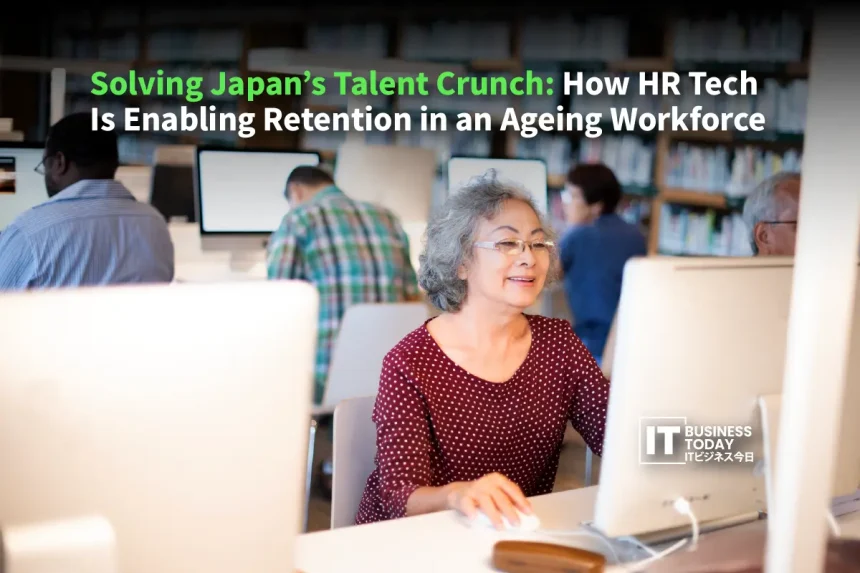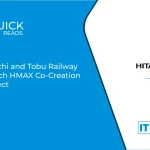Japan is walking straight into what many are calling the ‘Silver Tsunami.’ There is no such thing as a talent crunch coming, it is already present. Organizations are exhausting the supply of their young employees and the traditional method of continuously hiring is no longer effective. What’s left on the table is retention. How long you keep people and how much value you can draw from their experience before they retire.
This is where HR technology comes in. It’s not some side project for efficiency anymore. It’s the backbone of how Japanese companies will survive the next decade. From digital learning tools to workforce analytics, HR tech is turning into the real infrastructure for jinji transformation. The companies that treat it seriously will keep their knowledge and culture alive. The ones that don’t will simply fade with their ageing teams.
The race isn’t about hiring faster. It’s about holding on smarter.
Japan’s Unprecedented Demographic Crisis
Japan’s running into a talent wall that’s been building for decades. The country’s working-age group, those between 15 and 64, now stands at around 73.7 thousand people, roughly 59.6% of the total population. The number of people aged 65 and above has jumped to about 36.2 million, which is almost 29.3%. The total population as of late 2025 sits near 123 million, and that mix tells you one thing: there aren’t enough people working, and too many leaving the system too soon.
Also Read: The Rise of Wearables, IoT, and AI in Real-Time Healthcare
This isn’t just about numbers. Japan’s traditional retirement structure quietly pushes experienced workers, the shokunin, out of the game when they still have a lot to offer. These are people who’ve learned things you can’t Google, skills passed through observation, repetition, and instinct. Once they walk out, that wisdom walks out too. And most companies don’t even realize how much they lose until it’s gone.
So the real problem isn’t hiring new people. It’s what happens when the ones who know how everything actually works start disappearing. With the aging rate now hitting 42.5%, companies can’t just replace them with new grads or tech. Retaining older talent and passing on what they know has become the only way forward. That’s the real story behind the Japan ageing workforce, and it’s one that’s shaping the future of every industry in the country.
The Retention Imperative and the Shift from Recruitment to Employee Lifetime Value
Japan can’t recruit its way out of this talent crunch anymore. The pool of young workers is too small and the pipeline too slow. The only real way forward now is to hold on to the people who are already inside the system. Retention has quietly become Japan’s most important growth strategy, even if many companies still treat it like an afterthought.
The concept of Employee Lifetime Value (ELV) is becoming popular. The performance is not recognized by the number of recruits but rather the duration of employees’ stays, their growth, and the total contribution over the years. When the staff gets better benefits with learning, feedback, and flexibility as part of the Employee Experience (EX), there will be an increase in productivity and there will be no more resignations simply because of the desire for a different workplace.
But there’s a catch. Traditional firms still lean heavily on hierarchy and paper processes. True Digital Transformation (DX) means changing not just tools but habits. In Japan, that also means rethinking nemawashi, the slow and informal consensus building that keeps decisions from moving fast. Some structure is good, but too much of it kills innovation.
Companies like Mitsubishi are starting to show signs of that shift. Their management now includes 12% mid-career hires and 17.3% non-Japanese employees, proof that diversity and internal mobility are no longer side projects. This cultural shift will decide whether Japan’s ageing workforce becomes a liability or its most underrated advantage.
HR Tech Pillars for Ageing Workforce Retention

Every company in Japan is talking about transformation, but very few are doing it where it actually matters, in their people systems. The real test of progress is whether HR tech is being used to keep experienced workers active, skilled, and motivated. It’s not a side initiative anymore. As SoftBank put it, ‘our human resource strategy is a core element of our management strategy talent is the key that drives business growth.’ That’s exactly where Japan’s ageing workforce challenge meets its biggest opportunity.
Learning and Development / Reskilling Platforms
Older employees are often boxed into routines they mastered years ago, and that’s part of the problem. Reskilling is no longer optional if Japan wants to stay competitive. The best L&D platforms today offer micro-learning, small and focused lessons that fit into a regular workday. These tools also personalize content, helping older workers adapt to new digital tools without feeling left behind. It’s how companies quietly build DX readiness without overwhelming their people.
Performance and Feedback Systems
The old hyoka or annual appraisal model does not work anymore. It freezes people in place instead of helping them grow. Continuous feedback platforms are changing that rhythm by creating real-time conversations between managers and employees. For older workers, this recognition matters even more because it validates the experience they bring, not just the output they produce. It also opens up flexible career paths that don’t always move in a straight line.
Succession Planning and Knowledge Transfer Tools
Japan’s biggest hidden loss is tacit knowledge. The insights, workarounds, and problem-solving habits that sit in the heads of senior staff often vanish when they retire. HR tech platforms that map skills and pair mentors with successors can fix that. AI helps identify gaps and connects people based on complementary experience, turning knowledge transfer into a structured process instead of a goodbye lunch.
Wellbeing and Engagement Platforms
Finally, retention also depends on how companies handle wellbeing. Tools that monitor health trends, track engagement, and support flexible scheduling keep older employees productive for longer. When workers see that their company wants them to thrive, not just survive, loyalty naturally follows.
These pillars together form the real foundation of retention. They don’t replace experience, they extend it.
Implementation and Overcoming Cultural Barriers
Rolling out HR technology in Japan sounds straightforward until you run into the cultural walls that quietly slow everything down. Most companies still operate on legacy jinji systems that were never built to talk to modern platforms. That’s where Japanese-specific HRIS tools come in. They offer local language interfaces, integrate with older databases, and respect the strict data privacy norms that define corporate Japan. Without that localization, even the smartest global solution falls flat.
The other major barrier is mindset. Many teams hesitate to adopt new tools unless someone higher up sets the tone. In Japan, kachō and buchō play that role. Their buy-in decides whether a system stays in testing forever or becomes part of daily work. True adoption happens only when leadership models the change, not just approves it.
The scenario mentioned is already vividly illustrated by companies such as Toyota. In fact, the very latest sustainability report of the company indicates a direct connection between HR, diversity, workforce engagement, and business outcomes. Such a consonance provides a definite role to the technology and at the same time assures the workforce that the change is here to stay and not just a trend. It’s a shift in how Japan works, learns, and retains its people for the long run.
The Future of the Blended Workforce

Japan’s future at work is going to depend on how well people and technology learn to work together. The ageing workforce isn’t the country’s weakness, it’s actually its biggest untapped strength. The challenge now is making sure experience doesn’t fade out while new systems take over. HR tech is that savior. It provides the opportunity for the companies to keep the old-age staff engaged, linked, and empowered to pass their knowledge while the new ones take advantage of the technology to speed up and strengthen that base.
Retention and reskilling are not just management ideas anymore. They’re what keep a company alive when the hiring pool keeps shrinking. The actual victory is when the office turns into a place not defined by age but by the exchange of experiences.
In case the country keeps on developing this concept, Japan can demonstrate to the globe a true picture of a balanced, long-lasting staff. A locale where customs and innovations do not struggle for existence but rather, enhance and strengthen one another.






